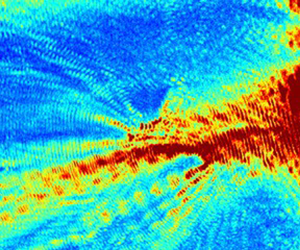Article contents
Acoustic–gravity waves from multi-fault rupture
Published online by Cambridge University Press: 29 March 2021
Abstract

The propagation of wave disturbances from a complex multi-fault submarine earthquake of slender rectangular segments in a sea of constant depth is discussed, accounting for both water compressibility and gravity effects. It is found that including gravity effects the modal envelopes of the modified two-dimensional acoustic waves and the tsunami are governed by the Schrödinger equation. An explicit solution is derived using a multi-fault approach that allows capturing the main peak of the tsunami. Moreover, a linear superposition of the solution allows solving complicated multi-fault ruptures, in particular in the absence of dissipation due to large variations in depth. Consequently, the modulations of acoustic waves due to gravity, and of tsunami due to compressibility, are governed simultaneously and accurately, which is essential for practical applications such as tsunami early warning systems. The results are validated numerically against the mild-slope equation for weakly compressible fluids.
JFM classification
- Type
- JFM Papers
- Information
- Copyright
- © The Author(s), 2021. Published by Cambridge University Press
References
REFERENCES
Williams et al. supplementary movie 1
Bottom pressure fields from the numerical model for a single fault (L= 100 km and b= 10 km). The parameters are given in Figure 3. the numerical domain extent and the coordinates of the virtual point observations are shown.
- 8
- Cited by





